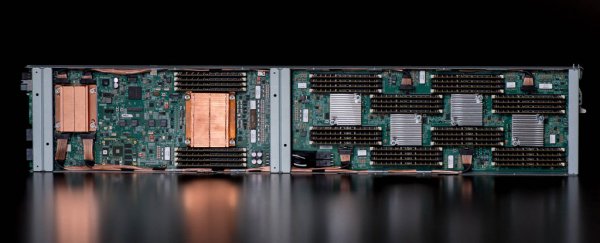This week, HP unveiled a working prototype of an ambitious new computer system, dubbed 'the Machine', which the company claims is the world's first demonstration of what it calls memory-driven computing.
The idea is that the Machine – which was first announced back in 2014 – will massively outperform existing technology, by placing extra reliance on memory to perform calculations, with less dependence on computer processors.
And while the Machine prototype we have so far is only being shown as a proof-of-concept of what the technology could ultimately be, there appears to be some truth to the performance claims.
HP Enterprise – the business-focused side of the corporation – says its simulations show that memory-driven computing can achieve improved execution speeds up to 8,000 times faster than conventional computers.

But before we get too excited, the Machine is likely to be years away from a commercial release, and its primary market is high-end servers that companies use to bring you things like Facebook and YouTube, not consumer PCs.
But that doesn't mean we shouldn't get excited, because while the Machine is ultimately a business tool, HP says the architecture it runs – memory-driven computing – could one day find a home in consumer products, down to even the smart devices such as internet-connected cameras and lighting systems that make up the Internet of Things.
So how does memory-driven computing perform calculations so quickly?
At its core, the Machine uses photonics – the transmission of information via light, rather than the electrons of conventional PCs – to help processors access data from a massive memory pool.
In conventional computers, calculations can sometimes be slowed down while data is transferred between different processors, but in the Machine, numerous processors can all access the same memory pool simultaneously.
And the speed is improved further by loading the device with extra memory.
The prototype system currently uses 8 terabytes of memory in total – about 30 times the amount a conventional server might hold, and hundreds of times more memory than the amount of RAM a typical consumer computer would have.
HP plans to eventually develop systems with hundreds of terabytes of memory – which would make the Machine even more powerful – and is also developing a new kind of experimental memory chip called a memristor, that can retain data even when powered down.
Memristor technology is still being developed, but with HP hoping for a commercial release of the Machine technology some time in 2018 or 2019, it's possible by then working memristors will be ready.
Memory-driven computing looks like it will provide a huge performance boost when it hits – we'll have to wait and see just when that will be.
Watch this space.
